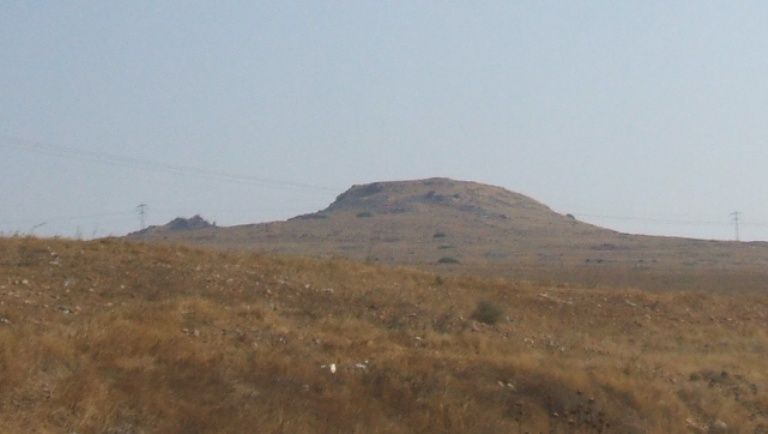 The Hittin campaign started when the Moslem army lead by Saladin invaded the Galilee on the 30th of June 1187 AD. They reached Kafar Sabat and positioned themselves along the Safori-Tiberias road. On the 2nd of July, one of the Moslem forces conquered Tiberias and placed its castle under siege. The Frankish army, who already started gathering at the springs of Safori, heard the bad news and decided, after a hard debate, to march on Tiberias. The Moslem army had approximately 12 thousand light-armed cavaliers and an unknown number of infantry. The Frankish army had 1200 heavily armed cavaliers and between 15 to 18 thousand infantry.
The Hittin campaign started when the Moslem army lead by Saladin invaded the Galilee on the 30th of June 1187 AD. They reached Kafar Sabat and positioned themselves along the Safori-Tiberias road. On the 2nd of July, one of the Moslem forces conquered Tiberias and placed its castle under siege. The Frankish army, who already started gathering at the springs of Safori, heard the bad news and decided, after a hard debate, to march on Tiberias. The Moslem army had approximately 12 thousand light-armed cavaliers and an unknown number of infantry. The Frankish army had 1200 heavily armed cavaliers and between 15 to 18 thousand infantry.
The Frankish army started marching on the 3rd of July, most probably early in the morning. They reached the valley of Turaan from one of two possible roads.
At that stage the Moslem army started distressing them with endless attacks. It was a hot summer day and the Frankish army moving fully armed ran out of water. The march was slow and was made at an infantry's pace.
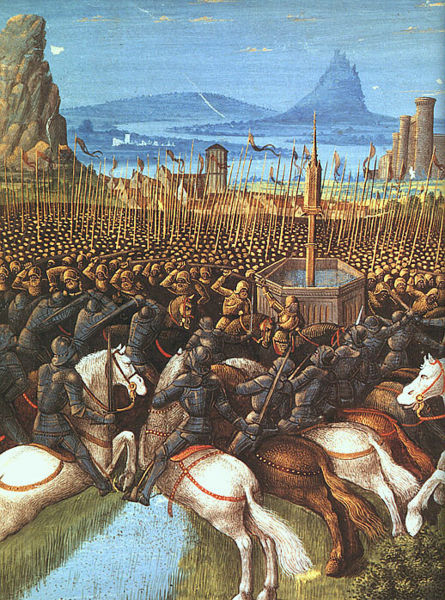 When they came by the Miskena pool (a seasonal pool that was probably empty at that time of the year), the Frankish army was heavily attacked at its tail, and the force led by Balowin de Iblin retreated.
When they came by the Miskena pool (a seasonal pool that was probably empty at that time of the year), the Frankish army was heavily attacked at its tail, and the force led by Balowin de Iblin retreated.
The rest of the army decided to camp next to the pool for the night, but they couldn't even get off their horses because the Moslem attacks continued through out the night.
By the next morning the Frankish army was on the move, the warriors and their horses hadn't drunk for a long time and were in total exhaustion. From this point onwards it isn't easy to follow the exact order of the events, but we know that at a certain point the Moslems burned the fields around the Frankish army.
At another point the force led by Raimond of Tripoli got the command (and honor) to charge against the Moslem troops that blocked their way. Instead of the two armies colliding, the Moslem force opened its ranks and Raimond's troops went right through them, never coming back to the battlefield. It is also unclear at which point the infantry fled to the horns of Hittin leaving the main body of cavalry unprotected behind. Another question is at which stage and where the king decided to camp, and finally if the Frankish knights tried in a desperate attempt to charge on Saladin himself.
The Moslem victory is marked by the fall of the Frankish king's red tent, his imprisonment and the capture of the relic of the True Cross (which since that time has not yet been returned to Christian hands). One-month after the battle of Hittin, Jerusalem was taken and the Moslem victory was complete.
Though we have learned a lot from historical studies of the battle, there are still many questions that need answering on the events of July 3rd-4th, 1187 C. E.
An archaeological study that would add material evidence to the written evidence may be able to provide us with new clues and perhaps some answers to existing questions.
This site has to this day never been fully excavated. In June 2008 Mnemotrix
assisted Rafi Lewis, Site Director, in undertaking a GPR study to
locate some enigmatic features.
Our GPR study was done close to
the anniversary of that battle, 821 years later.
More information ...
 Biblical Nazareth
Biblical Nazareth
To Mnemotrix GPR Study - Looking for 1st Century Burial Tombs 2008
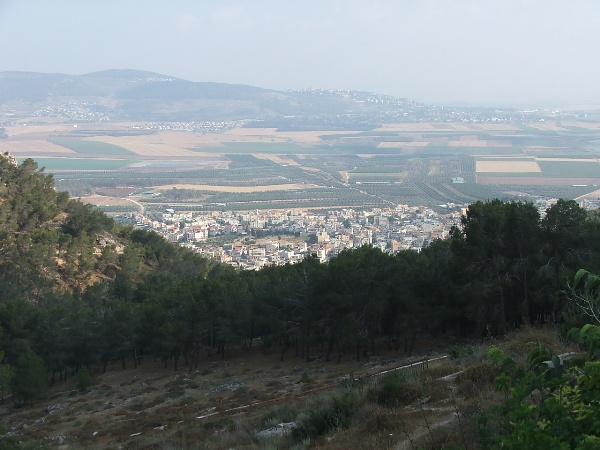 According to New Testament sources, Nazareth was the home of Joseph and Mary and the site of the Annunciation, when Mary was told by the Angel Gabriel that she would have Jesus as her son. Nazareth is also where Jesus grew up from some point in his childhood. In the Gospel of Matthew, Joseph and Mary settle in Nazareth after returning to Israel from Egypt. Many modern scholars argue that Nazareth is probably, in fact, where Jesus was born.
According to New Testament sources, Nazareth was the home of Joseph and Mary and the site of the Annunciation, when Mary was told by the Angel Gabriel that she would have Jesus as her son. Nazareth is also where Jesus grew up from some point in his childhood. In the Gospel of Matthew, Joseph and Mary settle in Nazareth after returning to Israel from Egypt. Many modern scholars argue that Nazareth is probably, in fact, where Jesus was born.
The family of Jesus has been traditionally referred to as the Desposyni, or
"of or belonging to the master or lord".
Non-biblical textual references to Nazareth do not occur until around 200 AD, when Sextus Julius Africanus, cited by Eusebius (Church History 1.7.14), speaks of “Nazara” as a village in "Judea" and locates it near an as-yet unidentified “Cochaba.”
What is really known about the Nazareth of ancient times? Are you curious?
Would you like to see for yourself? Come and tour the ancient hillsides
outside the modern cities. You can participate in new excavations which
go beyond the modern tourist sites.
More information ...
 Bethsaida - At the Top of the Sea of Galilee
Bethsaida - At the Top of the Sea of Galilee
To Mnemotrix 2008 GPR Field Study - The Elusive Strata 6, the City below the City
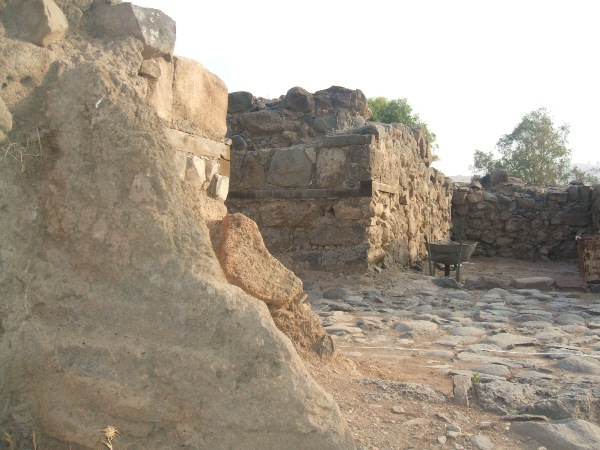 Bethsaida is one of the most frequently mentioned towns in the New Testament, with at least three (Peter, Andrew, Philip) of the 12 apostles born there. It is the purported place where Jesus performed several of his major miracles: walking on water, healing the blind man, and feeding the multitudes. But unlike many other well-known cities of antiquity, Bethsaida was never re-discovered by modern (20th Century) archaeology. In fact, the site was of such importance to pilgrims because of its relevance to Jesus' ministry that it was believed to be a mythical city. Pilgrims, archaeologists, and travelers searched for Bethsaida for nearly 2000 years.
Bethsaida is one of the most frequently mentioned towns in the New Testament, with at least three (Peter, Andrew, Philip) of the 12 apostles born there. It is the purported place where Jesus performed several of his major miracles: walking on water, healing the blind man, and feeding the multitudes. But unlike many other well-known cities of antiquity, Bethsaida was never re-discovered by modern (20th Century) archaeology. In fact, the site was of such importance to pilgrims because of its relevance to Jesus' ministry that it was believed to be a mythical city. Pilgrims, archaeologists, and travelers searched for Bethsaida for nearly 2000 years.
Bethsaida is frequently mentioned in the Second Temple period sources. Bethsaida means "House of the Fisherman". According to the New Testament, Jesus performed some of his most important miracles there, including the "Feeding of the Multitudes," and the "healing of the Blind Man," and from the Bethsaida shores, he was seen walking on the Sea of Galilee. Three major Apostles: Peter, Andrew, and Phillip, were from Bethsaida, and later Christian traditions associate other apostles with the city. Ultimately, Jesus condemned the city stating: "Woe to you, Chorazin! Woe to you, Bethsaida!"
The ancient Jewish historian, Josephus Flavius, recounts that in the year 30 CE, Phillip, the son of Herod the Great, raised the village of Bethsaida to the status of a Greek city and renamed it Julias, after Livia-Julia, the wife of the late Emperor Augustus. Four years later, Phillip died and was buried at his beloved Bethsaida. According to Josephus, Bethsaida also played a role in the opening battles of the First Revolt against Rome in 67 CE.
Bethsaida was well known in rabbinic literature as a town located at the historic borders of the land of Israel. According to second century figures, Rabbi Shimon ben Gamliel and the Emperor Hadrian speak of the abundant fish and fowl present at the city. Despite the large number of literary accounts in the Hellenistic and Roman periods, Christian pilgrim accounts throughout the Middle Ages could not pinpoint its location.
In 1987, Israeli archaeologist Dr. Rami Arav undertook a ten-day probe of et-Tell (literally "the mound") located 2 km from the northeastern coast of the Sea of Galilee in Israel to determine if the 21 acre site was indeed Bethsaida. His conclusions were promising, but Dr. Arav knew more work must be done to reveal more of the ancient layers. In 1990, Dr. Arav and several colleagues from around the world joined together to form the Consortium of the Bethsaida Excavations Project, which since then has been housed in International Studies and Programs at the University of Nebraska at Omaha. It is the CBEP's mission to excavate the ancient city of Bethsaida, research the data discernible from the remains, and disseminate the conclusions to both academic and popular audiences.
In addition to uncovering the Hellenistic-Roman city of Bethsaida, a surprising discovery happened in 1996. In this season, the remains of an Iron Age (time of Hebrew Bible) City Gate complex were uncovered, which has led the scholars on a new quest-to find out more about the Iron Age city that no one expected to find underneath the Hellenistic-Roman remains. It is now believed the Iron Age Bethsaida was the capital of the kingdom of Geshur. Geshur is notable in the Hebrew Bible for its visit by King David, and his subsequent marriage to Ma'achah, the daughter of the king of Geshur. The past four seasons of excavations have focused heavily on the Iron Age City Gate complex (one of the biggest and best preserved in the region) and its link to a previously excavated palace.
Bethsaida Blogspot
More information on Bethsaida Excavations
 Tell es-Safi - Home of Goliath of the Philistines
Tell es-Safi - Home of Goliath of the Philistines
To Mnemotrix GPR Study - Tracking the Siege Trench
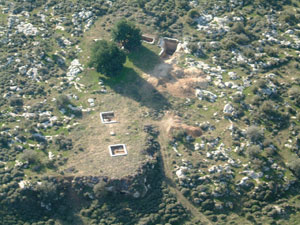 Tell es-Safi, which is identified by most scholars as the biblical city of "Gath of the Philistines" (the home of Goliath!), is one of the largest tells (ancient ruin mounds) in Israel and was settled almost continuously from the 5th millennium BCE until modern times.
Tell es-Safi, which is identified by most scholars as the biblical city of "Gath of the Philistines" (the home of Goliath!), is one of the largest tells (ancient ruin mounds) in Israel and was settled almost continuously from the 5th millennium BCE until modern times.
Continuous excavations are planned for at least the next decade. They will apply state of the art archaeological research and provide a field school for students and volunteers from all over the world. This ancient site is continually discovering new things as can be seen in recent headlines, where a sherd was found, which contains the earliest known Philistine inscription ever to be discovered, and mentions two names that are remarkably similar to the name "Goliath".
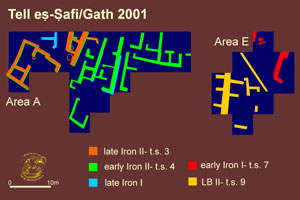 Gath of the Philistines was one of the five principal cities of the Philistines, the "Philistine Pentapolis" (along with Ashdod, Ashkelon, Gaza & Ekron). In the biblical text, and in particular in the portions relating to the early stages of the Judean and Israelite kingdoms, Gath is portrayed as the most important city (at least in relation to the Israelites). In fact it is mentioned in the Bible more often than any of the other Philistine cities. The prominence of Gath is seen as well through the mention of various figures originating from Gath ("Gittites") in the biblical narratives relating to the Davidic cycle. Suffice to mention Goliath who fought David (I Sam 17), the King Achish, to whom David escaped from Saul (I Sam 21;27;29), as well as several of David's heroes (II Sam 15:18-23). In addition, Gath is portrayed as a city of the legendary "Anakim", a race of giants, remnants of the early Canaanite population of the land (Josh 11:22). This earlier tradition may relate to the Gath/Gimti mentioned in the El-Amarna correspondance (EA 290) dating to the 14th cent. BCE (LBII), possibly the town of the Canaanite king Shuwardata.
Gath of the Philistines was one of the five principal cities of the Philistines, the "Philistine Pentapolis" (along with Ashdod, Ashkelon, Gaza & Ekron). In the biblical text, and in particular in the portions relating to the early stages of the Judean and Israelite kingdoms, Gath is portrayed as the most important city (at least in relation to the Israelites). In fact it is mentioned in the Bible more often than any of the other Philistine cities. The prominence of Gath is seen as well through the mention of various figures originating from Gath ("Gittites") in the biblical narratives relating to the Davidic cycle. Suffice to mention Goliath who fought David (I Sam 17), the King Achish, to whom David escaped from Saul (I Sam 21;27;29), as well as several of David's heroes (II Sam 15:18-23). In addition, Gath is portrayed as a city of the legendary "Anakim", a race of giants, remnants of the early Canaanite population of the land (Josh 11:22). This earlier tradition may relate to the Gath/Gimti mentioned in the El-Amarna correspondance (EA 290) dating to the 14th cent. BCE (LBII), possibly the town of the Canaanite king Shuwardata.
Throughout the Iron Age, Gath apparently passed from Philistine to Judean hands and back several times. It apparently was captured by David (I Chr 18:1), may have been fortified by Rehoboam (2 Chr 11:8, though the date of this text is far from clear), was apparently captured by Hazael of Damascus (2 Kgs 12:18), and recaptured by Uzziah (2 Chr 26:6). Nevertheless, it was still considered a Philistine city to late in the Iron age (Amos 6:2). In 711 BCE, Gath was conquered by Sargon II of Assyria, and apparently forever lost its independence.
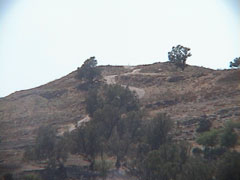 The identification of Gath has been extensively discussed in the literature. In the mid-19th cent., it was already suggested to identify Tell es-Safi as Gath (e.g. Porter and others). For many years though, following Albright, this identification was not favored and various other sites were suggested.
These identifications though are problematic, and as Rainey demonstrated (and recently reiterated by Schniedewind), the only site which fits in well with the various mentions of Gath in the Biblical and post-Biblical sources is in fact
Tell es-Safi. With the renewal of the new excavations at Tell es-Safi/Gath,
we have not, as of yet, found incontrovertible proof of this identification.
Nevertheless, the finds from the excavations lend strong support to this thesis.
This is particularly seen in light of the extensive finds dating to the Late Bronze and Iron Age I-II, and in particular, the wide range of Philistine material culture, all of which fits in very well with the proposed identification.
The identification of Gath has been extensively discussed in the literature. In the mid-19th cent., it was already suggested to identify Tell es-Safi as Gath (e.g. Porter and others). For many years though, following Albright, this identification was not favored and various other sites were suggested.
These identifications though are problematic, and as Rainey demonstrated (and recently reiterated by Schniedewind), the only site which fits in well with the various mentions of Gath in the Biblical and post-Biblical sources is in fact
Tell es-Safi. With the renewal of the new excavations at Tell es-Safi/Gath,
we have not, as of yet, found incontrovertible proof of this identification.
Nevertheless, the finds from the excavations lend strong support to this thesis.
This is particularly seen in light of the extensive finds dating to the Late Bronze and Iron Age I-II, and in particular, the wide range of Philistine material culture, all of which fits in very well with the proposed identification.